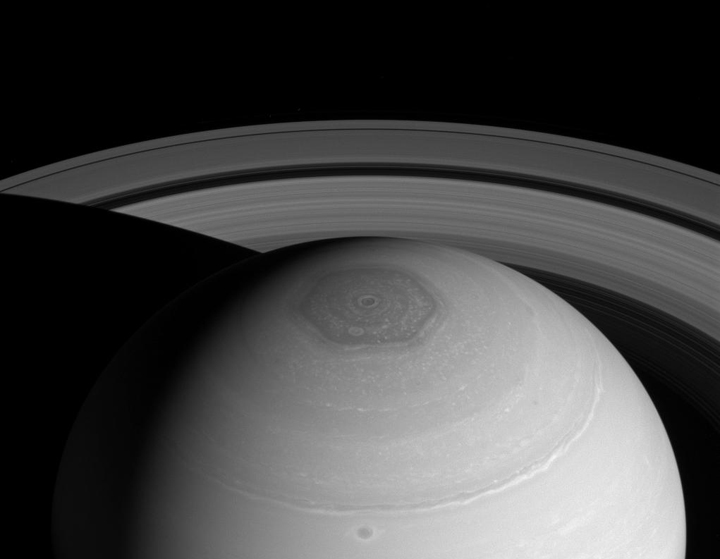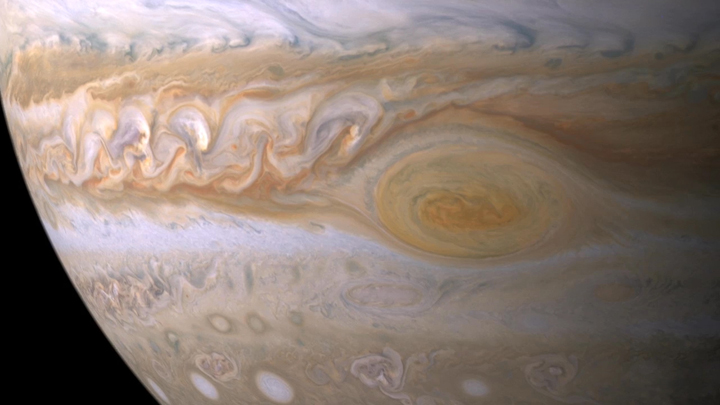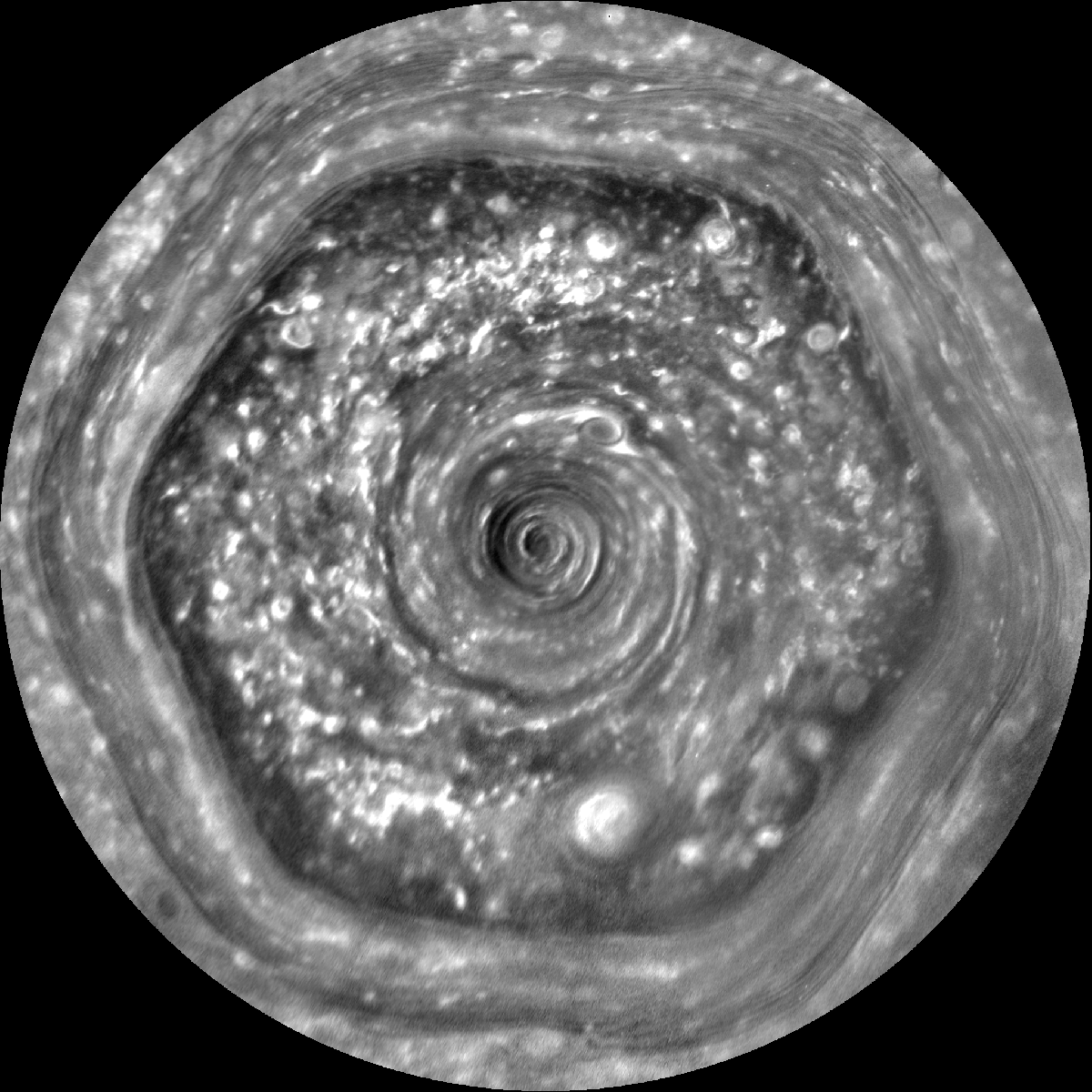Last week we discussed the strangest things in our universe. But we have a few odd things closer to home, too, right here in our own solar system. Here are just a few (they are in no particular order):

Great Red Spot
Imagine a hurricane so large that two Earths could fit inside it. Now, imagine that hurricane lasts for hundreds of years.
That’s the case for Jupiter’s Great Red Spot, a swirling maelstrom that has been dotting the planet for at least 300 years.
Jupiter is a massive planet: about 1,000 Earths could fit inside this giant of the solar system. It is considered a gas giant, as it is made up mostly of hydrogen and helium. The clouds swirling around the planet move at different rates, producing a stunning vision when seen.
Scientists don’t fully understand what is fuelling the Great Red Spot, but they do know some things: the cloud tops are higher than most of the other clouds, about eight kilometres above. The storm has remained in the same place by a flowing eastward jet stream to its south. And the winds are fierce: about 500 km/h around the edge. But the storm itself is fairly calm.
Interestingly, the spot has shrunk over the years. In 2013, research indicated that the storm had shrunk to a size of about 16,496 km across. That’s significant when you think that when NASA’s Voyager spacecraft flew by in 1979, the storm was calculated to be 23,335 km across.
Saturn’s hexagon
If you think Jupiter’s Great Red Spot is interesting, check out Saturn’s powerful hurricane.
Saturn has a swirling storm at its north pole that is shaped like a hexagon.
The hexagonal storm was discovered in 1988 when NASA’s scientists examined data sent back from the two Voyager spacecraft that flew past in 1980 and 1981.
The storm measures about 32,000 km wide and reaches down about 100 km into Saturn’s atmosphere. Once again, scientists still don’t quite understand what is giving it its bizarre shape, though they know it is related to its jet stream.
Using data from the Voyager spacecraft as well as the most recent Cassini mission, scientists found that the points of the hexagon rotate around the centre of the storm at almost the exact same rate that Saturn rotates on its axis.
WATCH: Massive hurricane on Saturn
Methane lakes on Titan
Saturn has a collection of more than 60 moons, making the planet a kind of mini solar system. Each moon is unique, but perhaps none is as fascinating as the moon with lakes of gasoline, Titan.
Titan is Saturn’s largest moon and, in many ways, similar to Earth, with weather systems and even lakes (there is even Ontario Lacus, ie. Lake Ontario). The atmosphere is made up of mostly nitrogen and methane, but also has organic molecules with carbon and hydrogen with some oxygen, which are found in our atmosphere, and are needed for life as we know it.

Visit Lake Ontario on Saturn’s largest moon, Titan? No, thanks.
Lakes on Titan are comprised of methane. And just like our water cycle, the lakes of methane form clouds and even methane rain.
In 2005, the European Space Agency’s Huygens spacecraft (part of the Cassini mission) actually pierced the haze and landed on the surface. It revealed a hazy, rocky landscape that has only whetted the appetite for further missions to Titan. See more images taken by Huygens.
Pluto
Whether or not you’re in the planet or not-a-planet camp, Pluto is a very interesting world.
Once considered the ninth planet in our solar system (it was reclassified as a dwarf planet by the International Astronomical Union in 2006), very little was known about Pluto until 2015 when NASA’s New Horizons mission flew past. Since then, a wealth of information has been uncovered about Pluto and its moons.

For one, astronomers discovered that Pluto has a far thicker atmosphere than anticipated. It also has had fairly recent (in astronomical terms) geological activity that occurred about 100 million years ago, and icy mountains that are kilometres thick.
There was even the belief that Pluto may even have clouds. But even cooler, it could be home to ice volcanoes.
Scientists are still awaiting a lot more data to be downloaded from the New Horizons missions, so this small world is likely to become even stranger.
Uranus
Quit your giggling.
Uranus (pronounced YER-an-us if you want to avoid laughter and bad jokes) is the seventh planet in our solar system. But, unlike the rest of the planets in our solar system, it orbits on its side.
It’s not known how this happened, but it’s theorized that a large body collided with the large planet, knocking it on its side. It also rotates from west to east (as does Venus). As a result of its bizarre rotation, it only experiences two seasons, each of which last 20 years.
The Death Star Moon
“That’s no moon! It’s a space station!”
If you were approaching Saturn’s moon Mimas, you might mistake the moon as the famed Death Star from Star Wars.
The surface of one of Saturn’s 60+ moons is pockmarked, evidence of a violent time in the moon’s formation as its surface was battered by space debris left over from the formation of our solar system. The biggest crater is the 140-kilometre-wide Herschel Crater, which covers nearly one-third of its almost 400-kilometre-wide diameter.
The moon is the closest major satellite to Saturn (there are a lot of tiny moons in and around the rings of the planet). Scientists believe Mimas to be about 1.17 the density of water, meaning that it is likely made up of water ice with a small, rocky core. However, its orbit is slightly elliptical, meaning that at times it is closer to Saturn than other times. This should cause more heating, so scientists are puzzled as to why it doesn’t have geysers of water erupting from its surface much the way that another moon, Enceladus, does (see below).
Enceladus
Seems like Saturn is home to a few of the most interesting things in our solar system.
Enceladus is a just about 500 kilometres wide, but is one of the most fascinating bodies in our solar system.
In 2005, the Cassini spacecraft discovered that this icy moon is spewing geysers of water vapour into space. Along with water vapour are other gases including carbon dioxide, methane and ammonia and possibly carbon monoxide or nitrogen.
In 2015, scientists released a study that found Enceladus is likely home to a liquid ocean. Together with water and thermal heating deep below this ocean, this could be the best place to search for life in our solar system.








Comments